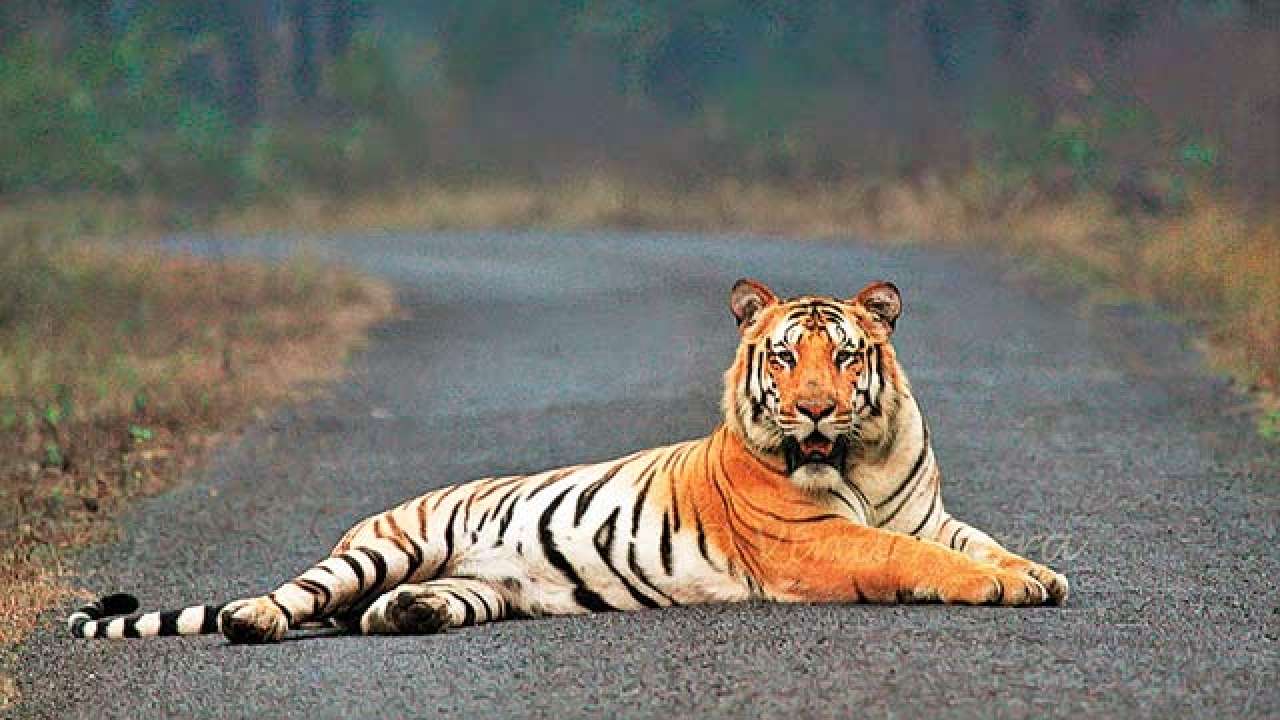All records of large striped cats’ walks in India were broken by a young Bengal tiger that covered a distance of 1.3 thousand km in search of a potential mate and prey base. This was said by Ravikiran Govekar, field director with the Maharashtra State Forest Department.
The five-month-long odyssey of the tiger, dubbed T1-C1 by scientists, was tracked by a radio collar. According to the scientists, the whiskered wanderer crisscrossed through vast forests and densely populated urban areas and made almost a round-trip before eventually settling in some other nature reserve in the same state.
Two-year-old T1-C1 was one of three cubs born to the TWLS-T1 female tiger in 2016. In February 2019, satellite radio collars were placed on all the three, the signal from which was tracked via satellite as part of a study to monitor the dispersal pattern of young tigers.
An 80 kg baby-tiger began its migration at the end of June 2019 from the Tipeshwar Wildlife Sanctuary, since an adult male tiger dominated the nearest territory. According to Govekar, this situation is typical: young male tigers migrate to find their habitat where they can assert their dominance, moving away from the place of origin, which is already densely populated by tigers.
“Their primary concern is to find a thriving prey base, however, it is also important to find a mate,” said Govecar, noting that there were no female tigers that it could mate with at the Tipeshwar sanctuary.” In addition, roaming tigers can refresh the gene pool by spreading their unique genetic material to populations in remote locations.
As a result, the wandering ‘knight’ crossed between the neighboring agricultural state of Telangana several times and returned back to Maharashtra, feeding on cattle and wild animals, mainly antelopes, along its way. Finally, having made its choice, the tiger stopped at the Dnyanganga Wildlife Sanctuary in Maharashtra, about 300 kilometers northwest of the place where its journey began.
“A tiger's behavior is unpredictable but we are keeping track of it,” said Vishal Mali, a divisional forest officer at the Dnyanganga Sanctuary. “This region has sufficient natural resources and prey for the tiger to sustain itself and it might decide to settle there permanently.”
It is noteworthy that for the first time since 2016, when the tiger migration monitoring program was launched in the Maharashtra state, more than half of a tiger's journey was through densely populated areas, including through 11 villages, without entering into direct fight with people and successfully reaching the destination. In this regard, the Maharashtra State Forest Department hopes that studying the T1-C1’s journey will help it to better manage the tiger migration routes and prevent conflicts between people and the big cats.
“Once it entered in the agricultural region, it could not come out and since it could sustain itself by killing farmers' cattle and was moving along a stream, it kept moving forward,” said Govecar. “There was only one incident recorded in Hingoli, when T1-C1 pawed a local, but I would not say that that was the tiger's fault; they were coming to take a selfie." As a result, one of them received minor injuries - the tiger simply put the insolent fellows on their places, not going to attack, and left the place ‘without saying goodbye’. And the villager, a lover of exotic group pictures, practically was not injured and made a full recovery.
According to the World Wildlife Fund, tigers are an endangered species, fewer than 4,000 remain on Earth, and two-thirds of the remaining tigers on Earth live in India. According to a survey by the National Tiger Conservation Agency (NTCA), published in July, the tiger population in India has increased by almost a third over the past four years up to 2,967 tigers, this represents a 33% increase compared to the last survey in 2014. The growth of the Red Book animal population has been observed here since 2006.
At the same time, according to the famous Indian environmentalist Gayathri Vaidyanathan, “these figures are inconsistent and may be unreliable.” “Habitat fragmentation linked with human development has left some tigers isolated in small reserves, and if current trends continue, the government may need to artificially maintain the gene flow by moving tigers between sanctuaries and national parks,” he notes. According to independent experts, there are enough undisturbed forests in India to support a population of between 10-15 thousand tigers. But the main obstacle to this is the uncontrolled forest harvesting, which destroyed the basis of the food supply for tigers in many places of their possible habitat.


